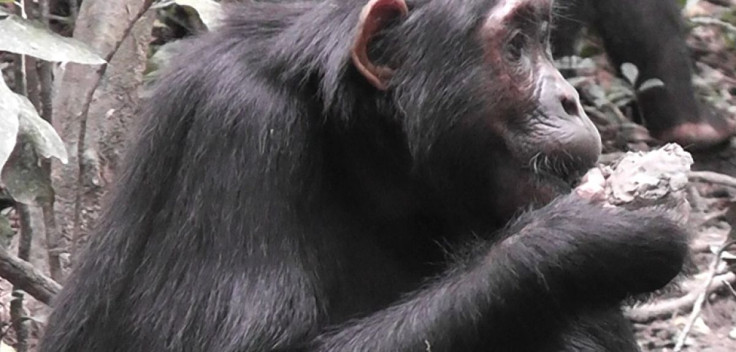Chimps in Uganda are eating clay to supplement their diets after raffia palm tree destruction [Video]

Wild chimpanzees in Uganda have been observed eating clay to supplement their diets following the widespread destruction of raffia palm trees they relied on for minerals, scientists have discovered.
Researchers at the University of Oxford said the chimps were seen eating and drinking from clay pits and termite mounds in the Budongo forest.
Until 2000, there were plenty of raffia palms for chimps in this forest and their decaying pith was an important source of minerals for the primates. However, raffia palms began to decline from around 2005, with the leaves used to tie and cut tobacco leaves. Since then clay feeding has increased.
The findings were published in the journal PLOS One and suggest the main reason chimps are eating clay is to boost the minerals in their diet and help them to "detox" and digest their food.
Scientists watched the chimps using leaves like "clay sponges", where they would dip them in the clay water and then put them to their mouths to squeeze the liquid out. The chimps also used their fingers to pick lumps of clay directly from the ground then ate it.
The team analysed the clay and soils and found they are high in a range of minerals, with clay being particularly high in aluminium, which is used by many species to aid digestion and detoxification. Scientists say the chimps probably use the clay to neutralise the high levels of tannins their diet of fruits and leaves includes.
They clay also contains sodium, calcium, iron, magnesium and potassium and the sponges were the most effective way to absorb the minerals.
Vernon Reynolds, leader of the study, said: "Raffia is a key source of sodium, but to our surprise the sodium content was very low in the clay so this does not appear to be the main reason for the new clay-bingeing. Instead, we believe the low concentrations of minerals present in their normal diet of fruit and leaves suggests that the clay is eaten as a general mineral supplement."
Study co-author Cat Hobaiter added: "Chimpanzees are often thought of as being very conservative, and the destruction of their natural feeding species can be hugely problematic. It's fascinating to see that Budongo chimps may compensate for the loss of one major source of minerals in their diet by increasing their use of alternatives like the clay."
© Copyright IBTimes 2025. All rights reserved.






















